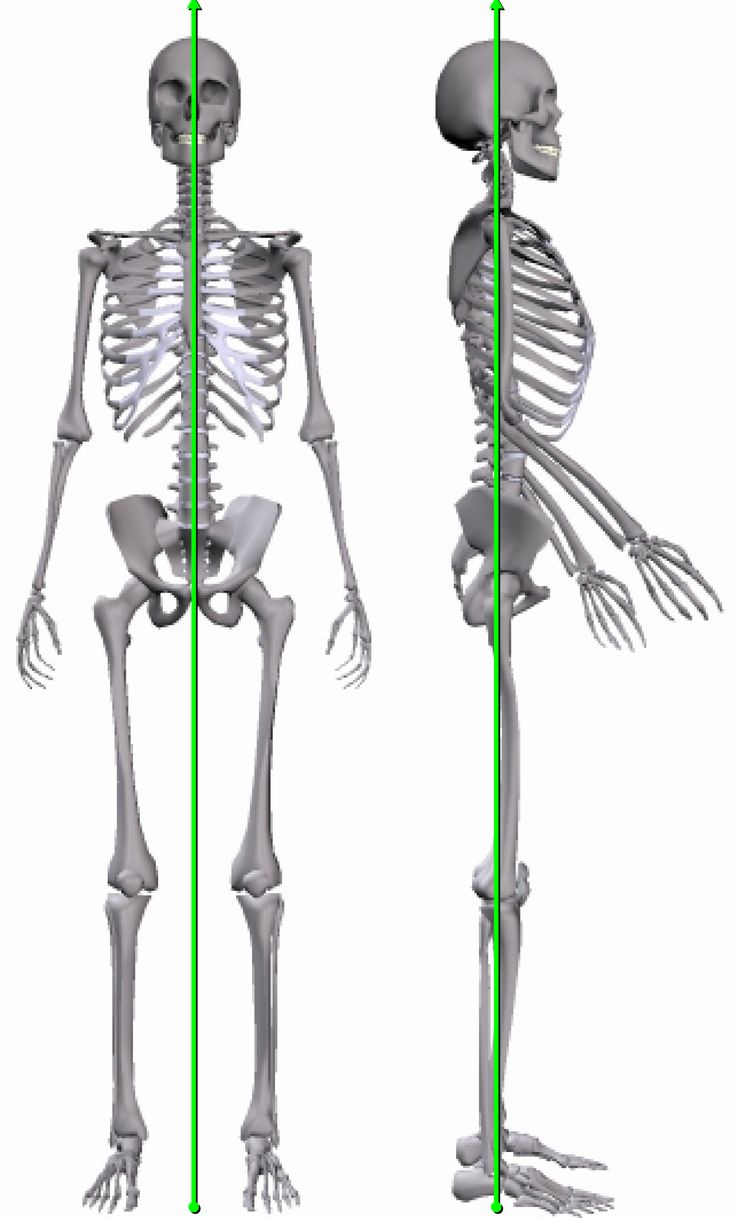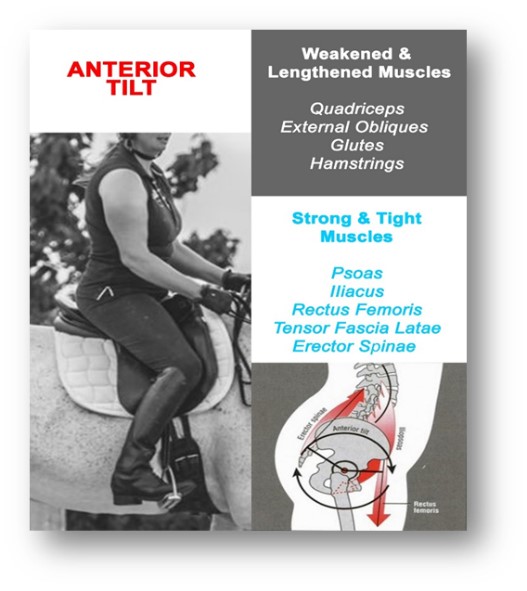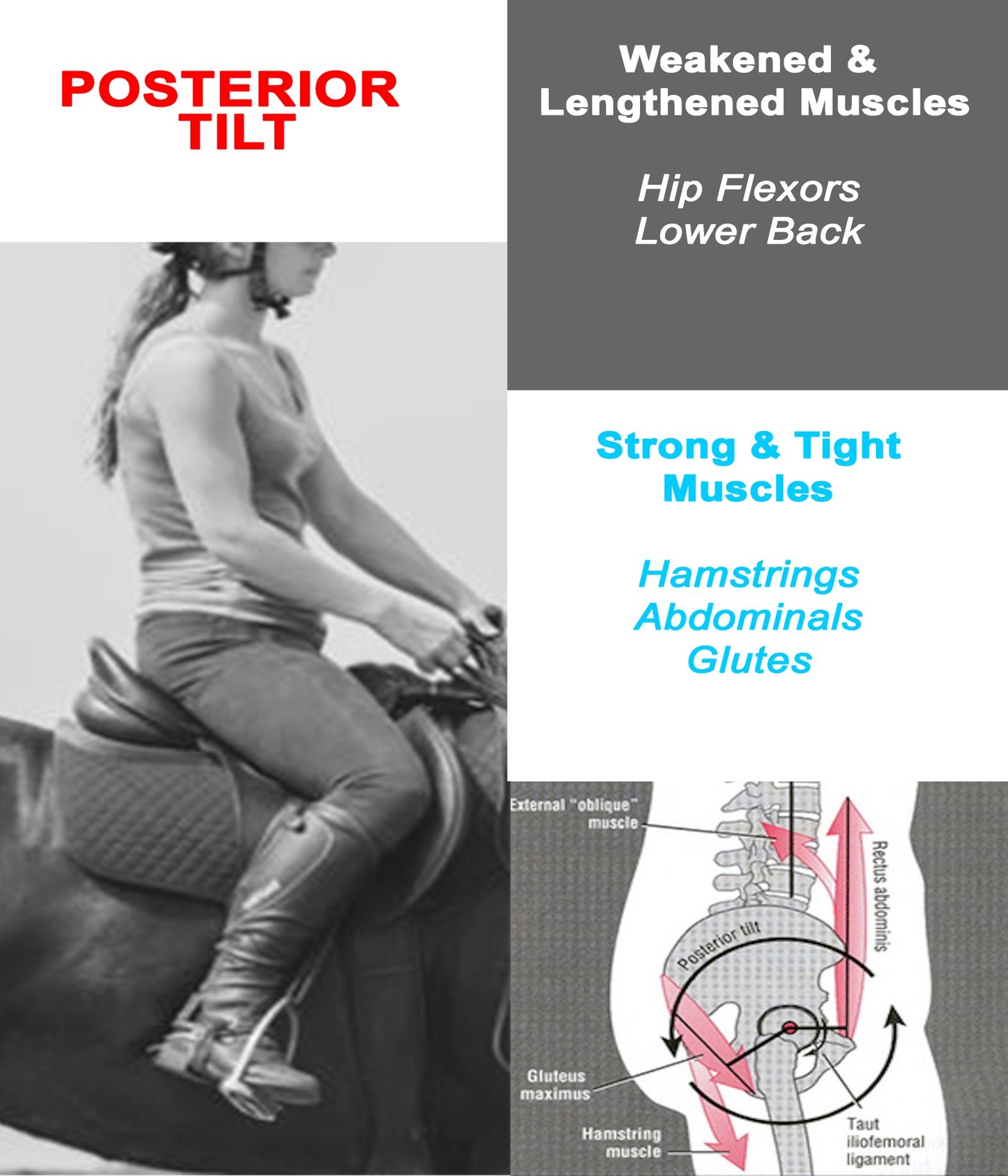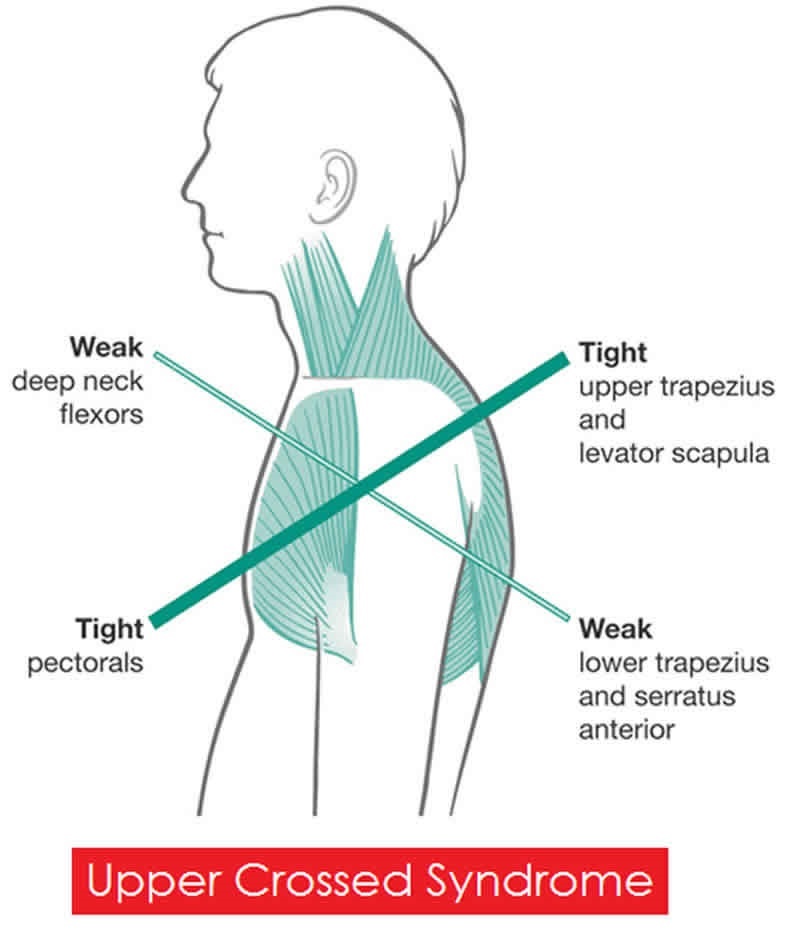This Riders Core Article was written by Clare for Endurance Magazine – Summer Issue 2023
This is the first part of a two part article which provides an insight into why Riders may be struggling to use their core in the saddle. Despite how hard they try.
What Is the Riders Core?
The word ‘Core’ is used heavily in the equestrian world, but few know what it really is, how to engage it and how it feels when you do. This is because it’s never really been truly explained to you, and most have never felt it in action.
Contrary to belief, your core consists of roughly 35muscles which are in the Anterior (front) and Posterior (Back) portion of your body. It does include your abdominal muscles, but it is NOT purely those muscle alone that are defined as your ‘Core’ muscles.
For your core to work, all these muscles must operate together supporting, giving, resisting, and contracting.
How Posture Affects your Core Function
Everyone has a ‘Core’ but your ability to engage it or for it to function optimally depends on your posture. If you have good posture then your core will be able to function at its best. If your posture is compromised, then your core will not be able to function correctly. Postural imbalances mean that muscles are either lengthened/weakened or shortened/tight.
The optimal or ‘correct’ posture is proper alignment of the spine and body. Alignment which maintains the three normal back curves in the cervical (neck), thoracic (upper part of your back) and Lumber (lower part of your back).
Looking at the body from the side, imagine there is a straight line from the centre of the shoulder, through the hips and knees and the back of the ankle bone.
Additionally, earlobes should line up with the centre of the shoulders which should be held back slightly and parallel with the hips.

Posture Types
The most common static posture types are:
- Lordotic Posture (Anterior Pelvic Tilt)
- Kyphotic Posture
- Forward Head Posture
- Sway Back (Posterior Pelvic Tilt).
Sway Back Posture
With a Sway Back posture, there is an increase in the posterior tilt of the pelvis and the trunk with a thoracic kyphosis. In comparison to neutral posture.
Typically, a result of bad postural habits and weakened muscles.
This posture is associated with an increased activity of the rectus abdominis (‘six-pack’ muscle) and decreased of the internal obliques (side muscles of abdomen) and the Iliopsoas (psoas and iliacus muscle group) and gluteus maximus (large bum muscle).
Posterior Pelvic Tilt (PPT)
A PPT is when the pelvis is rotated backward which causes the back to be pulled downwards giving the appearance of a [Flat Back / Flat Bum]
- If you have a PPT you may find that you round your shoulders and carry your hands forwards, collapsing through the chest and looking downwards (think slumping in a chair).
- You will often feel left behind in the saddle and will rely on your reins for balance as you are not able to engage your core and lift your chest high.
- Because of the slumping type posture, the back is compromised and there is no ‘natural’ curve in the lower back which inhibits the spines’ ability to absorb shock. This can lead to pain over time and even compromise the structure of the spinal discs.
Lordotic Posture
A lordotic posture has an increased lumbar lordosis (curvature of the lower back) and increased anterior tilt of the pelvis (pelvis tilting forward). Due to the increased tilt of the pelvis, there is an increased flexion (bend) of the hip joints.
The knees can be in hyperextension (excessive straightening/locking at the knee joint) which as a result can cause plantar flexion in the feet (weight in toes). Typically, a result of bad postural habits and weakened muscles.
Anterior Pelvic Tilt (APT)
An APT is when the pelvis is rotated forwards causing an increased curve in the lumbar (Lower Back) and an appearance of a ‘bulging’ stomach.
An Anterior Pelvic Tilt (APT) is when the pelvis is rotated forwards causing an increased curve in the lumbar (Lower Back) and an appearance of a ‘bulging’ stomach.
- If you have an APT it will be extremely difficult to sit neutrally and stabilise yourself through your core, especially through downward transitions. You will also feel locked through your hips and unable to move with your horse freely.
- You may also stick your chin up and/or forwards

- Because of the excessive curvature in the lumbar, the back is compromised and there is no ‘natural’ curve in the lower back which inhibits the spines’ ability to absorb shock. This can lead to pain over time and even compromise the structure of the spinal discs.
Forward Head Posture
FHP as it’s otherwise known is a poor habitual neck posture which will also involve Thoracic Kyphosis due to the slouched forward shoulders and rounding of the upper back.
Due to the often association of Thoracic Kyphosis this posture also results in Upper Crossed Syndrome.
Pelvic tilts can be associated with this posture type but it’s not a given. The pelvis can be neutral however the individual will suffer from neck muscle pain, fatigue and lack of blood flow which can lead to a number of issues such as headaches, and impaired upper body muscle performance.
Kyphotic Posture
Kyphotic posture is an increased curvature of the thoracic or sacral regions of the spine. It is typically due to bad posture but can also be it can also be related to age and conditions; Scheuermann’s and Congenital.
Please note that these conditions are severe deformities of the spine and not typical in the everyday person.
Upper Crossed Syndrome
This type of posture can lead to Upper Crossed Syndrome. UCS is muscular imbalances in your shoulders, neck and chest which results in pain/discomfort and reduced functional movement patters.
It is typically caused by an overly sedentary lifestyle and/or poor posture.
The Riders Core Summary
Many of the challenges riders face in the saddle are because their static posture is compromised.
Challenges such as:
- Collapsing through transitions
- Leaning/wonky in the saddle
- Losing a stirrup of feeling like you are slipping to one side.
- Reliant on the reins and/or being pulled out of the saddle by your horse
- Striking the wrong lead in canter
- Hip pain, knee pain, ankle pain, shoulder pain, back pain.
These are all symptoms that your body is not functioning optimally. It can be easy to focus on these symptoms rather than looking at the bigger picture. Your posture. If you try to resolve the symptom you will not correct the cause. But simply re-direct that imbalance elsewhere in your body.
There is a direct connection between your posture out of the saddle to in the saddle and how you function on the ground to how you ride.
To improve your riding, to allow your ‘Core’ to function its important to see the bigger picture. We all have a ‘Core’. Take a step back and assess how your posture is affecting it’s ability to function.
Learn More with The Rider Core Course
Learn More About with The Rider Core Course




